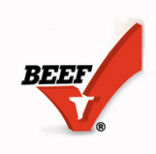May 25, 2010

Paul Clayton, vice president of export services for the U.S. Meat Export Federation that contracts to manage foreign marketing programs for the Beef Checkoff Program, says the continuing diversification of U.S. beef products is creating new revenue streams for producers and processors in the international marketplace. It's an evolution of our industry that can and should continue.
"Most of the time in the markets we're in, they're looking for quality beef, something that's different than what they might get – they're looking for differences in the marketplace. And the way cattle are produced in these competitive countries can vary a little bit," Clayton said. "The United States is very, very lucky in that we do grain feed the animals – we're able to use that as a marketing opportunity. Other countries that we really compete with such as the Brazilians and the Australians, don't do a lot of that; however, they're starting to do more and more of that grain feeding, and so they've brought themselves up, I would like to say they brought themselves up to our level and now they're competing a little more head-to-head with us on what we call high-quality grain-fed beef. Although, it's terribly expensive for them – the United States is a very efficient cattle producer."
Without question, BSE has set the U.S. back in the global marketplace. New BSE-related rules for trade have increased U.S. costs of production by requiring additional processing and record-keeping procedures. While these requirements add complexity and cost to U.S. beef production, they also offer another opportunity for differentiation and diversification. Clayton poses this question to U.S.. producers: Could the beef industry add another layer of diversity and differentiation to our current marketing of U.S. beef if we described our products as being High Quality Beef derived from cattle under 21 months of age?
"If you look at the big pictures on that, maybe it's an opportunity we may need to take a look at," Clayton said. "And the reason I say that is, we know that even today, some of the exporters and packers have some premium programs to capture those cattle. Another thing we know is that virtually, I think maybe USDA estimates that 90% of the cattle produced in the United States, are less than 20 months inherently. Our dilemma is they're just not very well marked. And the thing is, I think it would be very difficult for our competitor countries such as South America and Australia, to market cattle under 20 months of age. I guess the point would be – if we give them that challenge, can they do that?"
Clayton leaves some final questions for producers to ponder: So what's the next "big" idea for global customers, and can U.S. producers leave competitors scrambling to catch up? And, what does foreign marketing really mean to you as producers?
"If you can get more value in the marketplace, that just pulls more dollars back into the total system, and hopefully cattle prices will go up," Clayton said. "I think the thing is, the way we look at it is that foreign markets are value-added markets. Because a simple equation people can think about is with variety meats which is not something that is consumed in the United States, but once we move those into foreign markets, they gather more value, sometimes as much as five or ten times their value in the United States. It's just a very simple byproduct but by moving it into the international market, we've added value. Those dollars that are added should flow back into the system where more of that money can be garnered by the cattle producers." (48 seconds)
For information on other foreign marketing efforts being funded with your beef checkoff investment, visit www.usmef.org or www.MyBeefCheckoff.com.
You May Also Like




